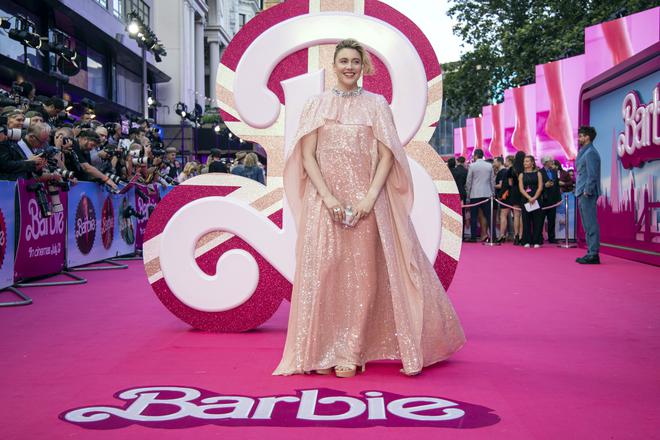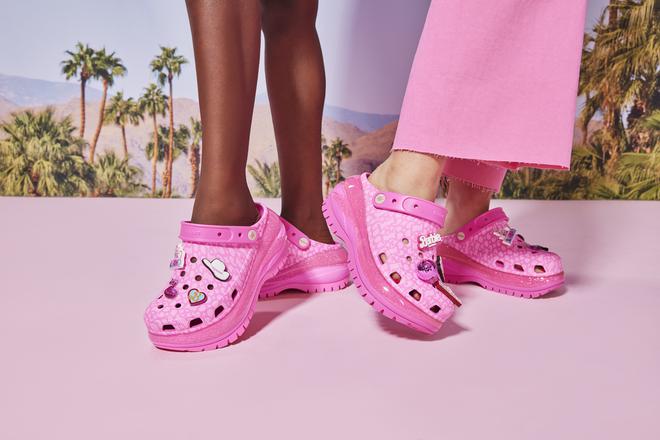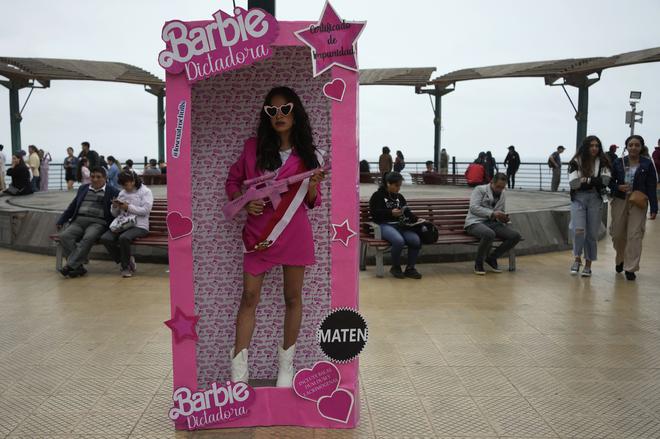It was inevitable, going by the general rules of the universe, that Barbie would see a resurgence. But not even the most smitten champions of the slender, high-heeled doll could have predicted the maniacal proportions it has taken. Barbie fever is so high that not only are people around the world wearing pink to go watch the movie, but everything from food to political memes and messages are awash with it. No longer is Barbie a doll for little girls to project their fantasies on; the blonde bombshell has now gone mainstream.
The movie grossed $337 million its first weekend, making it the most successful cinematic enterprise of 2023 and its first-time director Greta Gerwig now has the honour of the biggest debut of a woman director. Part of it is the result of an efficient marketing campaign (reportedly $150 million), which pitched the doll and her story as a feminist polemic, but a lot of it has to do with the times we live in. For there is no better time to be Barbie-core than the Instagram age. It is, as the kids call it, a great collab: Barbie x Insta.

Guatemala to Pakistan
On the predictable business side, the makers of Barbie partnered with around 100 brands, creating pink Crocs, pink Gap T-shirts, pink Mumu swimwear, pink hair dryers... you get the drift. (Harder to wrap your head around — Burger King launched a burger with a bubblegum pink sauce in some markets to mark the occasion.) But the real determinant of Barbie’s radical new popularity lies beyond just the pink products.


In Guatemala, a presidential candidate released a TikTok video pitching herself as a Barbie who sought prosperity for all, according to the Associated Press. In Mexico, a Barbie accessorised with a shovel became the icon for ‘Searching Mothers’, a group of volunteers who search grave sites for missing children’s remains. In Pakistan, the movie was pulled from theatres until four words that “promoted homosexuality” were bleeped out. Vietnam banned the movie outright because a map depicted China’s unilateral claim of territory in the South China sea. In the U.S., right wing groups and Republican leaders blamed the movie for everything from pandering to the Chinese Communist Party to being “anti-men”.


None of this should have been a surprise, for the real genius of the Barbie film lies in its tagline “She’s everything, he’s only Ken”. The homages and the criticisms demonstrated above only add to the truism of this line. The filmmakers seized the zeitgeist by casting Barbie as a feminist icon, with the storyline focused on taking on the patriarchy. Framing it in this context absolves moviegoers from any self-doubt before encasing themselves in everything pink that is owned or could be bought.
Shiny, but not too deep
What is more au currant than fighting the patriarchy? Doing it all dressed up. In a world where everything is performative, the Barbie x Insta collab provided the perfect foil. As Instagram feeds filled up with pink on pink, Barbie became a symbol for... something. No one could quite put a finger to what it was, so they just called it Barbie-core, because as long as it’s shiny and nice, no one really cares to go deep on social media.
In all this rhetoric about the movie’s so-called feminism, no one is bringing up the fact that the main Barbie is still a perfectly proportioned white woman; that enduring cultural symbol of what constitutes “true beauty”. The centrifugal force of “Barbie’s everything” comes from the notion that Barbie can have any profession she likes. She can be an astronaut or a doctor or a news anchor. Her professions are, really speaking, just her fashion. Barbie is what Barbie wears. Where else can you be whatever you would like to project yourself as, you ask? Instagram!

Instagram, where everything is cosplay and you can become a movie star or a motivational coach or a monk by just pretending to be one for long enough is the Barbie dreamhouse we have all been inadvertently living in. It’s just a short leap then to thinking if we doll ourselves all in pink, we can be both an object of universal desire as well as a champion for gender equality. It’s no wonder the world is swept up in Barbie fever. We have been practising for this for more than a decade now.
The writer is the author of ‘Independence Day: A People’s History’.







